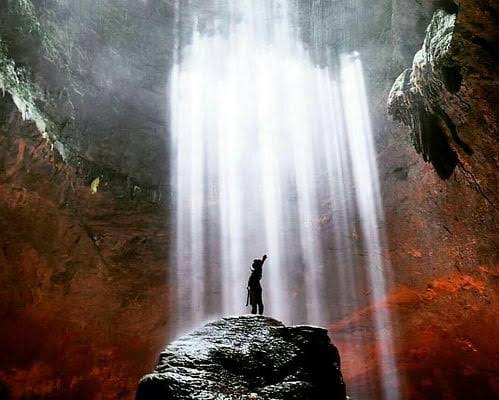
Exploring the Karst Caves of Pacitan: Adventure Beneath East Java’s Rugged Terrain
Karst Cave Exploration Tours in Pacitan offer an immersive adventure, winding through forested trails and mysterious underground chambers shaped by water and stone. This guide provides practical tips and vivid descriptions, inviting both casual hikers and seasoned explorers to prepare for an unforgettable journey below East Java’s rugged surface.
Start Early to Avoid Rain
Pacitan’s wet season brings sudden afternoon downpours; beginning your hike in the morning improves safety and visibility inside the caves.
Wear Sturdy Waterproof Footwear
Uneven limestone with slippery sections requires boots with solid grip to reduce risk of slips and falls.
Bring a Reliable Headlamp
Dark cave passages demand consistent light; carry spare batteries to stay safely illuminated throughout exploration.
Hydrate Regularly
While cave humidity is high, physical exertion needs replenishing fluids. Carry at least 2 liters of water per person.
Exploring the Karst Caves of Pacitan: Adventure Beneath East Java’s Rugged Terrain
East Java’s Pacitan region invites adventurers to explore caves carved by time within its dramatic karst landscapes. These caves challenge with tight passages, underground rivers, and shadowed chambers that feel fiercely alive. The tour begins with a trek through undulating forest paths, where the sudden snap of twigs and the whisper of leaves remind you nature is present and alert. Expect about 6 kilometers of hiking with a moderate elevation gain of 450 meters, mostly on uneven limestone terrain dotted with loose rocks and occasional mud patches, requiring steady footing.
Inside the caves, water weaves through crystalline formations, daring you to navigate slippery limestone floors and steeper inclines. Light plays a subtle game, illuminating jagged walls and the dripping sculptures of stalactites and stalagmites. The air thickens with the cool, damp breath of the earth itself, compelling respect and care as you move forward. These caves are not merely physical spaces, but living ecosystems, home to bats and blind fish, whose presence speaks to the isolated, fierce nature of this underground world.
Preparation demands pragmatism: pack waterproof hiking boots with good grip, carry a reliable headlamp with extra batteries, and bring at least two liters of water. Start early to avoid afternoon rains common in the wet season and wear layered clothing to manage temperature shifts inside the cave. Local guides offer crucial knowledge of narrow routes and hidden hazards, invaluable whether you’re a casual hiker or an experienced spelunker.
Beyond the underground spectacle, the surface trails reward with leafy canopies that filter morning light onto rocky slopes and distant views of the coast, sharp and bright. The experience balances physical effort with sensory richness, making every step tangible, grounded, and thrilling in turn. Respect the karst caves’ story written in stone and water–they are fiercely themselves, presenting a challenge that humbles and inspires.
Nearby Trips
All Adventures
Boat Charters
Water Activities
Adventures near Pacitan, East Java
Discover the unique and memorable adventures that make Pacitan, East Java special.
Frequently Asked Questions
Are Pacitan’s karst caves suitable for beginners?
Yes, many caves include guided tours that cater to casual hikers and first-time cavers, with manageable passages. However, some sections demand agility and comfort with confined spaces.
What wildlife might I encounter during the tour?
Bats are common inhabitants, forming part of the cave’s ecosystem. On surface trails, watch for monitor lizards, various bird species, and insects adapted to humid karst environments.
How long is the typical karst cave exploration tour in Pacitan?
Most tours cover 4 to 6 hours including hiking to the cave entrances, underground exploration, and return trek, depending on chosen routes.
Is there any cultural or historical significance attached to these caves?
Some caves in the area have been used historically as shelters and local folklore sites. Guides often share stories linking caves to ancestral traditions and regional myths.
What environmental considerations should visitors observe?
Visitors should avoid disturbing the cave ecosystem, especially bats and fragile formations. Stick to paths, minimize noise, and avoid littering to protect this sensitive environment.
Are local guides necessary for exploring the caves?
Strongly recommended. Guides know the labyrinthine cave networks, can identify hazards, and provide safety equipment and support to ensure a secure adventure.
Recommended Gear
Waterproof Hiking Boots
Protects feet on wet, uneven terrain with better grip and ankle support.
Headlamp with Extra Batteries
Critical for safe navigation inside dark cave passages.
Moisture-Wicking Clothing Layers
Helps regulate temperature between warm surface and cooler cave interiors.
Lightweight Rain Jacket
Keeps you dry and comfortable during sudden tropical downpours.
Local Insights
Hidden Gems
- "Bukit Bulek viewpoint offers striking coastal panoramas not far from the main cave routes."
- "Small freshwater springs inside secondary caves, often overlooked, create tranquil natural pools."
Wildlife
- "Bat colonies thrive inside caves, integral to insect control and cave ecology."
- "Rare blind cave fish can be spotted in subterranean streams."
History
"Several caves have long histories as refuge sites during conflicts and as part of local spiritual practices."
